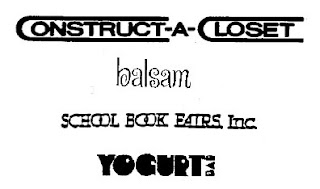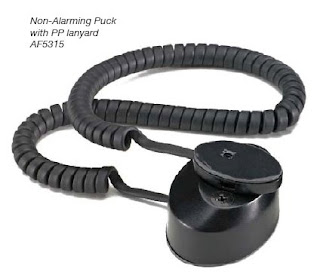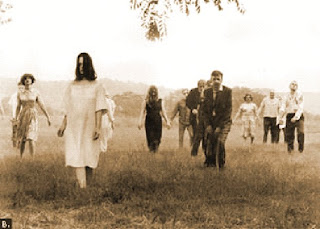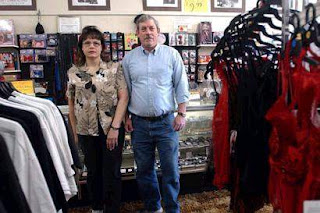Pursuant to Article 7 of the Pan American Convention, the Board granted Opposer's motion for summary judgment in its opposition to registration of the mark
CUBITA in the design form shown immediately below, for "coffee." The Board ruled that Opposer, a Cuban company, had standing to bring the opposition and enjoys priority over Applicant by reason of Opposer's ownership of the
CUBITA mark in Cuba and its pending application to register that mark in the United States under Section 44 of the Trademark Act.
Corporation Cimex, S.A. v. DM Enterprises & Distributors Inc., Opposition No. 91178943 (November 17, 2008) [not precedential]. [Marty Schwimmer of the
Trademark Blog comments below.]

Cuba and the United States are parties to the Pan American Convention, which is self-executing and "has the same force as a federal statute and provides remedies independent of the Lanham Act."
Opposer Cimex has standing by reason of the PTO's refusal to register its mark in view of the application here opposed. Applicant DM Enterprises argued that the existing embargo between the United States and Cuba deprived the Opposer of standing, but the Board disagreed, pointing out that Opposer's claims are not based upon ownership of a "confiscated mark" and citing it recent decision in
Corporacion Habanos, S.A. v. Anncas, Inc., 88 USPQ2d 1785 (TTAB 2008) ["opposer has standing, although it does not and cannot engage in any business in the United States due to the embargo on Cuban goods."] As in
Habanos, Opposer here provided a letter from the U.S. Department of Treasury confirming that entities like Opposer are permitted to oppose "where these actions relate to the protection of a trademark in which Cuba ... has an interest."
Turning to the merits, in order to prevail under Article 7 of the Pan American Convention, Opposer must here establish (1) that it owns a CUBITA mark protected in Cuba; (2) that Applicant is using or applying to register an "interfering mark" in the United States; (3) that Applicant had knowledge of the existence and continuous use in Cuba of Opposer's CUBITA mark in connection with goods in the same class, prior to its use of the CUBITA mark in the United States; and (4) that Opposer has complied with the requirements of the U.S. legislation and the Convention -- i.e., that it is seeking protection under Section 44 of the Lanham Act.
The Board found that Opposer satisfied these four requirements. Opposer submitted a copy of its Cuban registration and a copy of its United States application file history. [Opposer's registered mark is depicted immediately below]. Applicant did not dispute that its mark interfered with registration of Opposer's mark.

Moreover, Applicant DM conceded that it knew of the existence and use of the CUBITA mark in Cuba by Opposer and its predecessor. Finally, Opposer satisfied the fourth element because it filed to register its mark in the USA under Section 44 (stating that it intends and expect to use in commerce in the United States its Cubita-marked Cuban origin coffee as soon as U.S. law permits").
Applicant "failed to make any legal arguments against opposer's claim of priority" and its factual assertions were both irrelevant and unsupported by any evidence. The Board therefore entered summary judgment in favor of Opposer.
 Marty Schwimmer comments:
Marty Schwimmer comments: The Pan American priority clause is somewhat unique. Unlike the Paris Convention priority clause, it is neither limited in time nor applied as of right. Nor is it quite like a "famous mark" protection clause in that the senior user does not have to prove fame in the country where the dispute takes place, but merely that junior user was aware of senior user’s rights in the home country.
Accordingly, the Pan American Convention does not create a trap for the "innocent filer" as the Paris Convention does. [Do any old-timers out there remember the expression “to be Lemon-Treed,” named after the LEMON TREE case, the seminal case enforcing Paris Convention priority against the ‘unaware’ US applicant?]
Instead, while this Pan American priority enforces the same sort of policy as does Paris priority -- the race will go not to the swiftest but the oldest -- it eliminates land mines by inserting what is essentially a bad-faith element that must be established.
Now, someone has to write a law review note on the CUBITA case, squaring the holding in the COHIBA case in the Second Circuit [discussed
here at the Trademark Blog], which refused to enforce trademark rights of the Cuban plaintiff on the ground that to do so would violate the Cuban Embargo Act, with the matter-of-fact statement in the CUBITA decision allowing Cuban entities to file and obtain trademark registrations.
TTABlog note: Last year, the Board dismissed an opposition involving the mark PARDO'S CHICKEN, because the Peruvian applicant established priority under the Pan American Convention.
Diaz v. Servicios De Franquicia Pardo's S.A.C., 83 USPQ2d 1320 (TTAB 2007) [precedential]. [
TTABlogged here].
Text Copyright John L. Welch and Martin Schwimmer 2008.








































